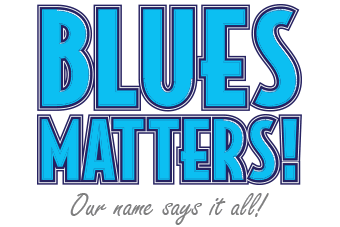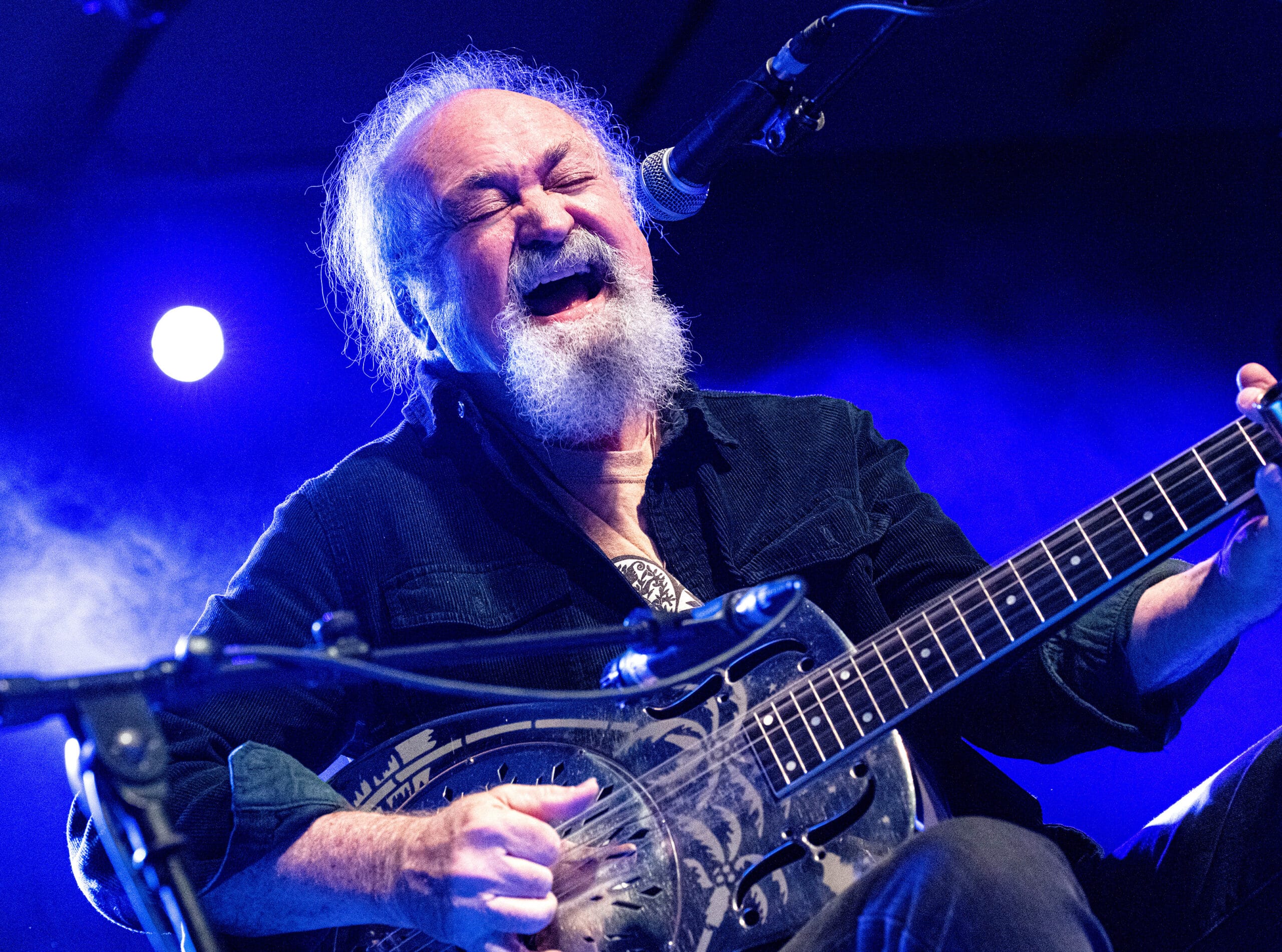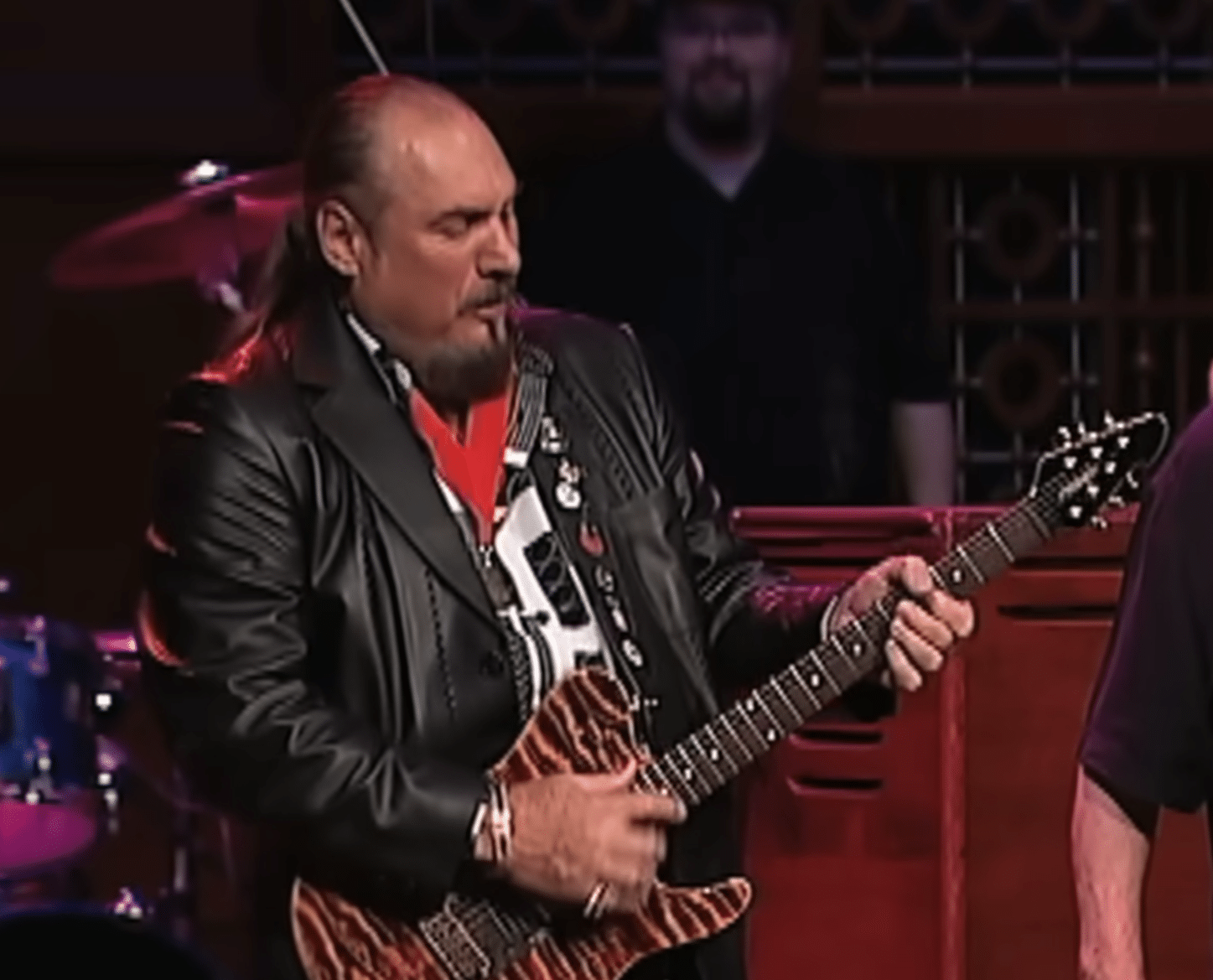Tim Arnold on Blue Lightning guitarist Joe Ish
Lightning Can Strike Twice.
And it did …
He pulls his sound up out of his soul, a seared white soul that starts somewhere deep inside, beyond his heart, down in his gut, and here it comes, erupts, really, through his hands – a cruising, searching left hand and a driving, determined right, pulling notes and chords from his 1990 Fender Stratocaster Plus that reach right down your throat, into your own self, and grab you by the ass.
I first heard Joe Ish – that’s what they call him – a couple of months ago on a Thursday night, at Finley’s – an Irish pub and eatery in Largo, Florida, that books genuine, kick-ass R&B whammer jammers one night a week. Why Finley’s? I don’t know. And I don’t care. I’m just glad they do.
A deeply emotional reaction, a spiritual exchange between your inner id and the tunes, the band, the players.
Whatever those spirits are that move you.
Joe brought his New York chutzpah to Florida some twenty years ago from Long Island, by way of Hawaii, and wrapped it in a kind of gentleman’s swagger, tempered by a bit of humility, that serves him well at gigs. Country handsome. Articulate. Sits a black brimmed Stetson hat down on his head, steadying his long, dark hair, hovering over eyes that are clenched shut while he plays – which makes his spontaneous left-handed journeys up and down the neck of his guitar that much more impressive.
He’ll open his eyes to sing, sometimes, but even if he does, he’s staying in a world of his own, his music. He makes it his.
“I’ve sung since day one, just had to,” Joe tells me. Heartfelt. Real. He’s not mimicking the original artists; it’s him, and it’s as true as his guitar notes.
But it’s his playing, and how he gets there, that leaves you wanting more every time.
Joe didn’t pick up a guitar until he was 18 years old, an age when guys like Stevie Ray Vaughan were already touring. Acoustic, at first. His older brother played. A renter downstairs in his parent’s house played. Three guys next door, all brothers, also played. So Joe had to, too. Then he gets himself a Les Paul Gibson electric and soon they’re playing rock gigs around Long Island.
“Never took a lesson,” he says. Hell, does any genuine bluesman?
Works construction during the day; gets himself through three years of college, including one year at Five Towns college – a music and performing arts school on Long Island – and then bails out to dedicate himself to his music. He’s back home, living in a van, and to practice, he runs an electric chord over to his mother’s house next door, and plugs in. By then he’s got one of those Fender Evil twin amps, with two twelve-inch speakers.
There’s a woman living down the street named Eileen, five years older than Joe. She digs Joe and his music. Joe digs her, too, soon enough they’re soul mates, so he follows her to Hawaii. That was 27 years ago. They got married 14 years ago – and she’s still his soul mate.
Jim Murray – with Quicksilver Messenger Service and who played at Monterrey Pops in the late ‘60’s, – was Joe’s next-door neighbor on Maui. “One time Jim told me,” ‘man you gotta play the blues’,” says Joe. “So I did. Have ever since.”
Joe and Eileen
His first blues band was Spontaneous Combustion (there’s a theme here …), which he put together with “Da Wolf” Wolfenson, co-founder of the Buck’s County Blues Society (the country’s first, and still active). They played the very first Maui Jazz and Blues Festival and opened for the likes of Junior Wells and Dr. John.
In 1998 Joe and Eileen return to the mainland and land in Clearwater and soon enough Joe’s jamming at Dave’s Aqua Lounge and Rockwell’s Corner Pub. Molten Mike (Deselle) – a local who continues to play out and tour locally, and abroad – was the regular Tuesday night jammer at Rockwell’s, and one night he gets sick for the first time in like five years. Joe sits in for him and before he leaves the owner offers him a regular Thursday night jam, and soon enough he’s playing with Nitro Bozeman and his Blues Machine, from Chicago, and all kinds of other colorful characters.
So he puts together his own band, the Hired Guns, with Al “Razz” Rasimas on bass.
“That was the beginning of the Thursday night jam, the longest-running regular jam in the country, which continues to this day at Finley’s – after Rockwell’s closed three years ago,” as Joe tells it.
At one point he takes two years off from gigs so he can work extra hours and buy a house for Eileen and him to move into. He goes back to his day job, house painting.
A few years later there’s a new band. Joe calls it Blue Lightning – which turns out to be a bit of wicked foreshadowing. He anchors it with “Razz” on bass and brings in John Thomas (JT) on drums and Steve King on guitar – whose playing has been a fabulous complement to Joe’s ever since.
And then lightning strikes Joe again. This time, it’s the big one.
One day in 2005 Joe and his best friend and house painter partner, Bob Rukavina, are working on a house in Bellaire. They’re moving a tall aluminum ladder around the corner of the building and it tips top heavy oontoa power line. 7400 volts of electricity knife into Joe’s right arm and course through his body, knocking him flat out cold.
“The only reason I’m alive today is because the rivets on my jeans pulled the current through my body, and out my ass,” Joe says. The electrical current’s pathway, it’s called, and it miraculously bypasses Joe’s heart, and brain.
But not his partner’s: Rukavina died on the spot.
A chopper gets Joe to the nearest hospital, where doctors discover fourth degree burns on Joe’s upper arm, where the electricity entered. (Fourth degree: “a burn that extends deeply into the subcutaneous tissue, completely destroying the skin, subcutaneous fat, and underlying tendons, and sometimes involving muscle, fascia, or bone. Mosby’s Medical Dictionary, 9th edition. © 2009, Elsevier)
Ten days later his doctors tell him he’s got severe nerve damage – and a half-paralyzed right hand. After five surgeries and a skin graft from the vestigial muscle from his left leg he regains partial use of it, but his fingers and thumb are frozen in an impossible form, and he’s facing the likelihood of never playing guitar again.
He takes two months off, and then, “No way I’m done,” says Joe. He picks up his guitar and there it is: he’s got what John Lee Hooker called that “boogie woogie” in him. “It’s in him and it got to come out.” http://www.lyricsmode.com/lyrics/j/john_lee_hooker/boogie_chillun.html
But it’s not going to be easy, and he can’t get that boogie out, not yet anyway, not with a right hand that’s become an R&B ax man’s worst nightmare. Or painter’s, or glad hander’s, or nose picker’s. He’s lost most of his finger picking ability, and his restricted elbow movement robs him of the kind of rhythmic, circular picking that R&B guys rely on to create a kick, a pulse.
So, without any kind of hand specialist’s help, or professional rehab facilities, he goes to work in a makeshift gym behind his house. Dedicates himself to recovering some digit mobility in his right hand. And his own self, along the way.
He straps on a rigorous daily routine: practice guitar every morning, work all day, workout 3-4 days a week when he can. A regimen he follows to this day.
“Could have been worse,” Joe says. “It could have been my left hand, and there’d be no way I could fret (chord) with it. Not even close. But I can pick. I lost some of my wrist strumming dexterity,” he says, “but I’ve gained some soul.”
He sure as hell has. Now he plays out up to five nights a week.
Blue Lightning’s range is insane. From the Allman Brothers to Zeppelin. That’s what their website says (www.lightningblues.com), and it’s for real. Hell, they play the Stones. And some Beatles. And good as that stuff is, Blue Lightning’s heart and soul – and best music – is R&B. The rhythm that is the blues. Freddy King. Stevie Ray. Albert (King … Collins). B. The Wolf. Joe’s got a range that rivals Buddy Guy, who can play anything from Elmore James to Jimi.
Blue Lightning: Joe Ishikawa, Steven King, John “JT” Thomas, Al “Razz” Rasimas
So can Joe.
When I first saw him at Finley’s I was so blown away I had to introduce myself at the first break, just to tell him. So I go up to the bandstand and stick out my hand, and without hesitation,he takes it in his right hand for a hearty bro-shake, and it’s only then do I realize the depth of the blues this guy wakes up with every morning and wrings out of himself every night.
“It’s like the classic blues 1-4-5 chord progression,” he says: “birth, life, death. And then rebirth – start all over.”
The author (right) sitting in with Blue Lightning.
Tim Arnold, 1 Sept 2016, 917-748-6058, possible20@aol.com



